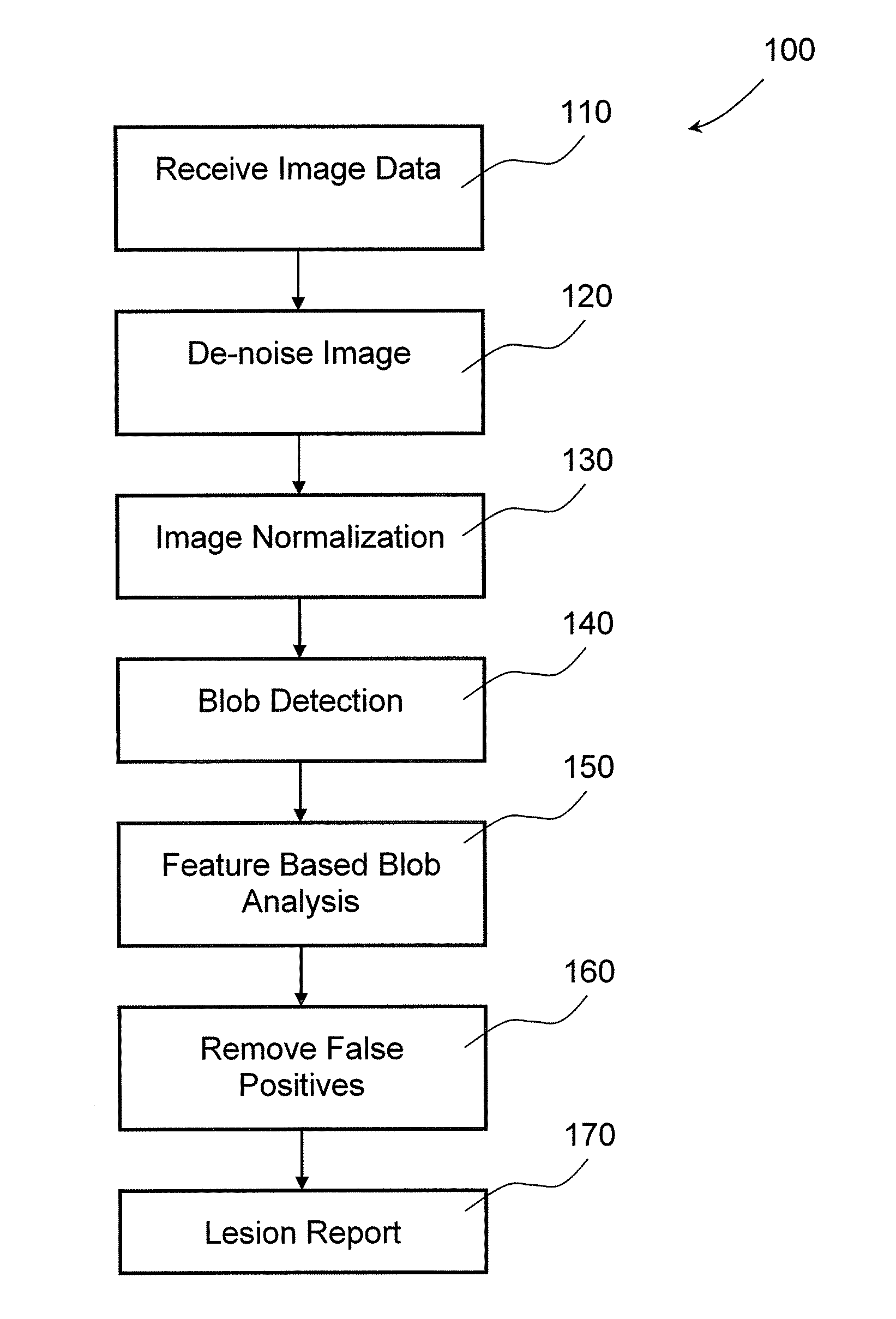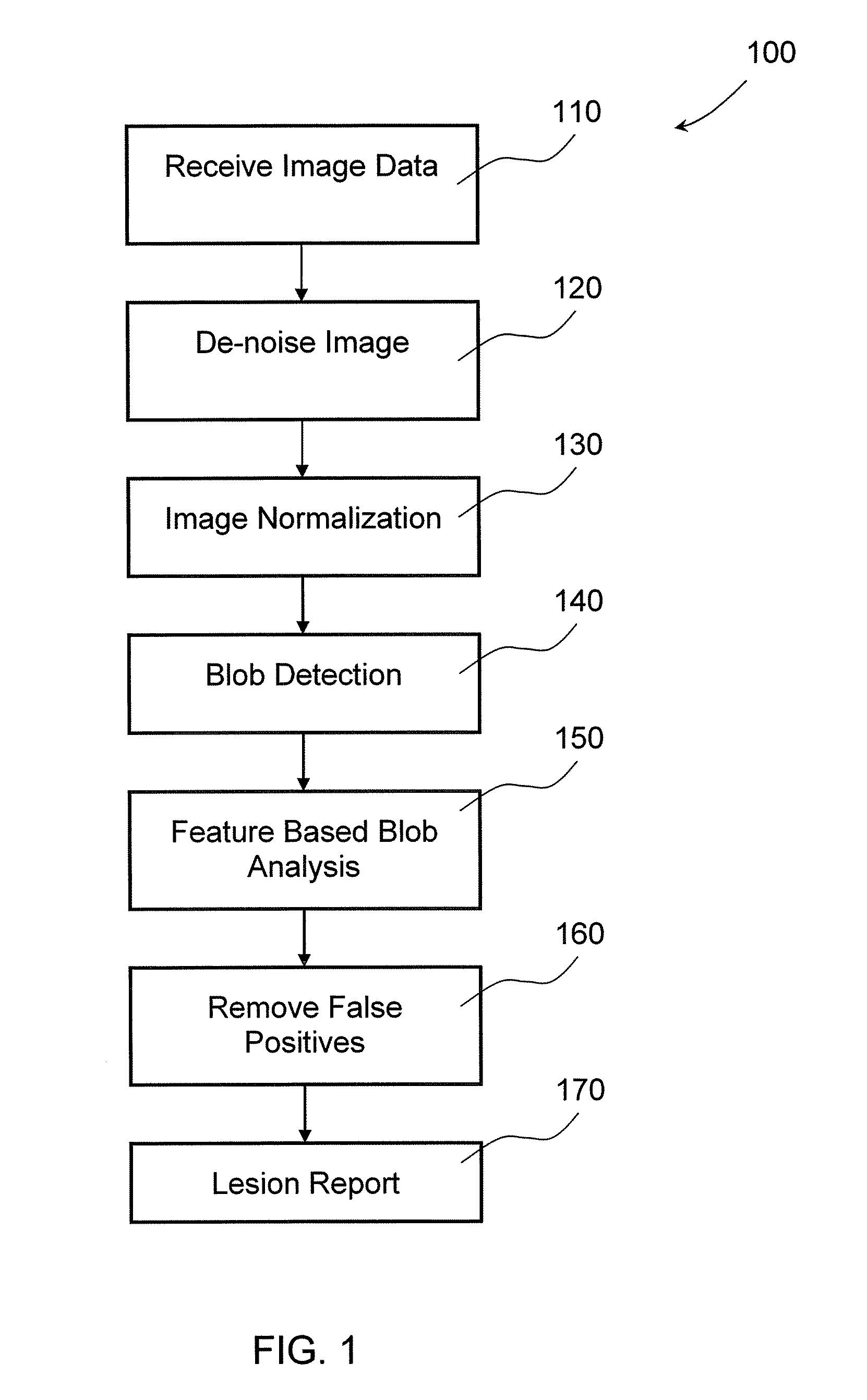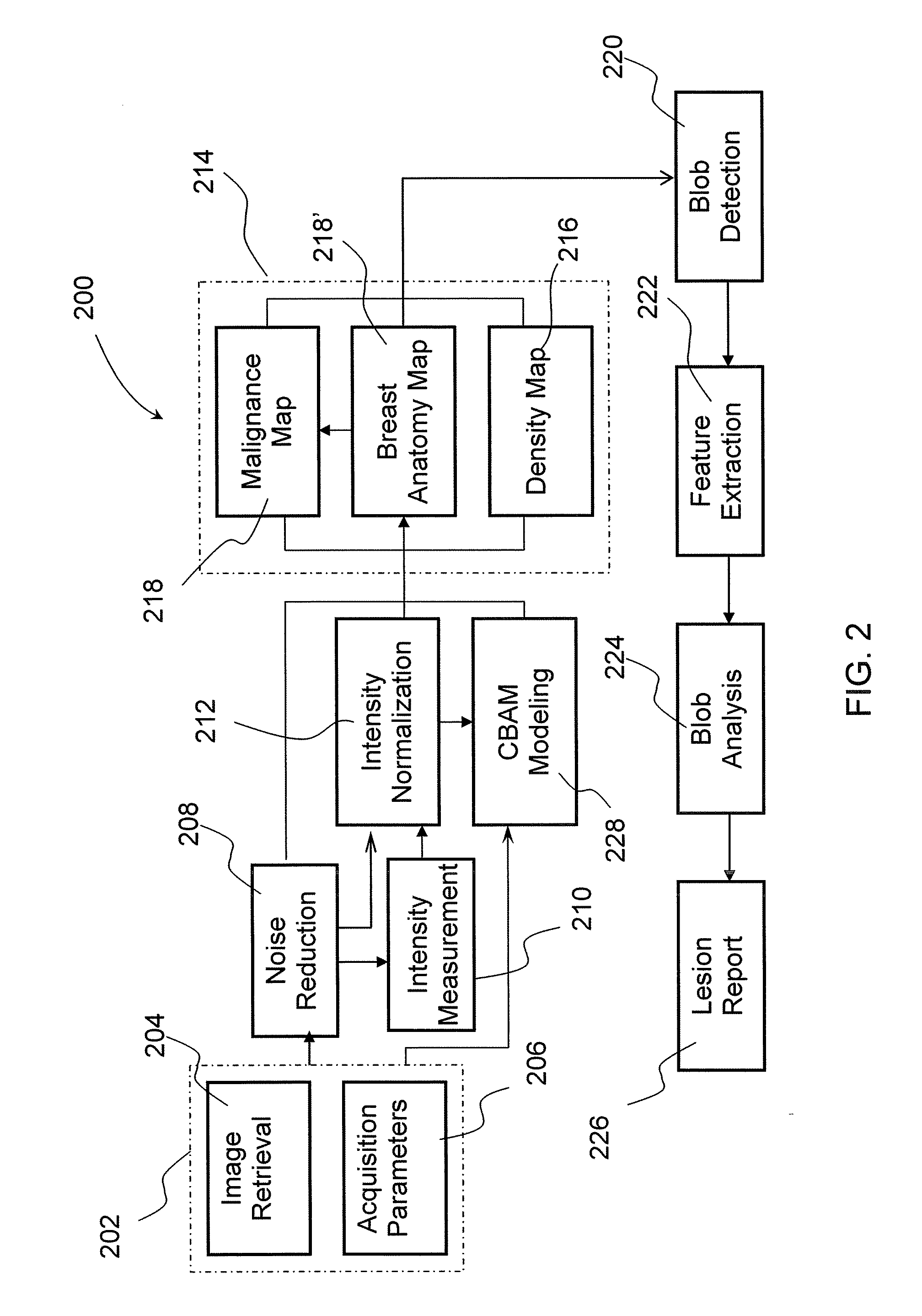Method and system of automated detection of lesions in medical images
a technology of medical images and automated detection, applied in the field of computerized processing of medical images, can solve the problems of inconsistent diagnosis of ultrasound images, unfavorable patient safety, and difficulty in achieving negative predictive values attainable by highly experienced experts
- Summary
- Abstract
- Description
- Claims
- Application Information
AI Technical Summary
Benefits of technology
Problems solved by technology
Method used
Image
Examples
Embodiment Construction
[0032]The description which follows and the embodiments described therein are provided by way of illustration of an example, or examples, of particular embodiments of the principles of the present invention. These examples are provided for the purposes of explanation, and not limitation, of those principles and of the invention. In the description which follows, like parts are marked throughout the specification and the drawings with the same respective reference numerals.
[0033]The present invention generally relates to a system and method of processing medical images. In particular, the invention relates to detection of lesion candidates in ultrasound medical images.
[0034]In one embodiment, a sequence of image processing routines are applied to an input image, such as a single breast ultrasound image (or volume data set), to detect and classify each lesion candidate that might require further diagnostic review. FIG. 1 is a flow chart that provides an overview of the process 100.
[00...
PUM
 Login to View More
Login to View More Abstract
Description
Claims
Application Information
 Login to View More
Login to View More - R&D
- Intellectual Property
- Life Sciences
- Materials
- Tech Scout
- Unparalleled Data Quality
- Higher Quality Content
- 60% Fewer Hallucinations
Browse by: Latest US Patents, China's latest patents, Technical Efficacy Thesaurus, Application Domain, Technology Topic, Popular Technical Reports.
© 2025 PatSnap. All rights reserved.Legal|Privacy policy|Modern Slavery Act Transparency Statement|Sitemap|About US| Contact US: help@patsnap.com



